Yehia Massoud
Chance-Aware Lane Change with High-Level Model Predictive Control Through Curriculum Reinforcement Learning
Mar 07, 2023Abstract:Lane change in dense traffic is considered a challenging problem that typically requires the recognization of an opportune and appropriate time for maneuvers. In this work, we propose a chance-aware lane-change strategy with high-level model predictive control (MPC) through curriculum reinforcement learning (CRL). The embodied high-level MPC in our proposed framework is parameterized with augmented decision variables, where full-state references and regulatory factors concerning their importance are introduced. In this sense, improved adaptiveness to dense and dynamic environments with high complexity is exhibited. Furthermore, to improve the convergence speed and ensure a high-quality policy, effective curriculum design is integrated into the reinforcement learning (RL) framework with policy transfer and enhancement. With comprehensive experiments towards the chance-aware lane-change scenario, accelerated convergence speed and improved reward performance are demonstrated through comparisons with representative baseline methods. It is noteworthy that, given a narrow chance in the dense and dynamic traffic flow, the proposed approach generates high-quality lane-change maneuvers such that the vehicle merges into the traffic flow with a high success rate.
Dissolving Is Amplifying: Towards Fine-Grained Anomaly Detection
Feb 28, 2023



Abstract:Medical anomalous data normally contains fine-grained instance-wise additive feature patterns (e.g. tumor, hemorrhage), that are oftenly critical but insignificant. Interestingly, apart from the remarkable image generation abilities of diffusion models, we observed that diffusion models can dissolve image details for a given image, resulting in generalized feature representations. We hereby propose DIA, dissolving is amplifying, that amplifies fine-grained image features by contrasting an image against its feature dissolved counterpart. In particular, we show that diffusion models can serve as semantic preserving feature dissolvers that help learning fine-grained anomalous patterns for anomaly detection tasks, especially for medical domains with fine-grained feature differences. As a result, our method yields a novel fine-grained anomaly detection method, aims at amplifying instance-level feature patterns, that significantly improves medical anomaly detection accuracy in a large margin without any prior knowledge of explicit fine-grained anomalous feature patterns.
Service Discovery in Social Internet of Things using Graph Neural Networks
May 25, 2022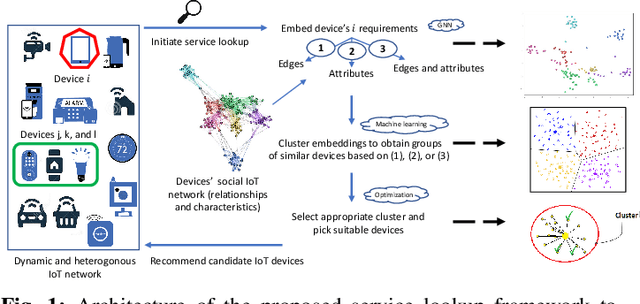
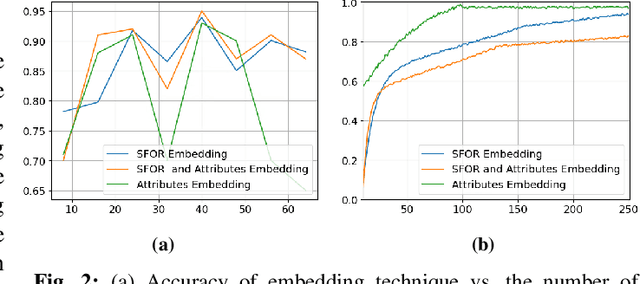
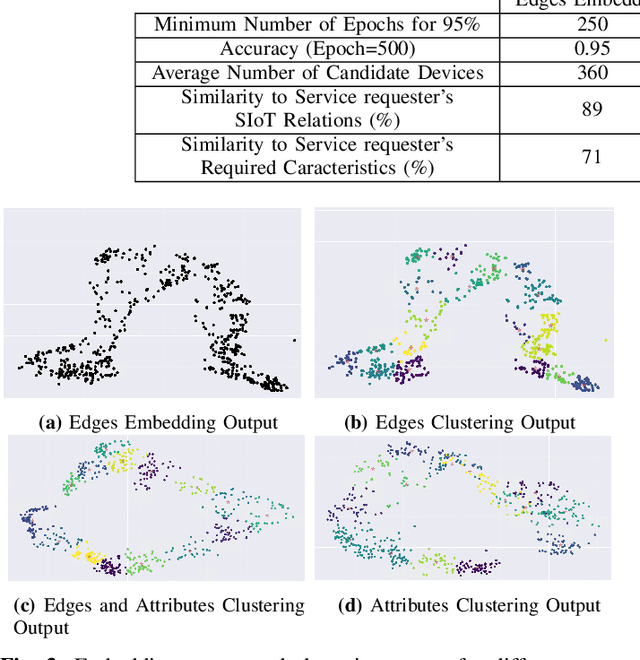

Abstract:Internet-of-Things (IoT) networks intelligently connect thousands of physical entities to provide various services for the community. It is witnessing an exponential expansion, which is complicating the process of discovering IoT devices existing in the network and requesting corresponding services from them. As the highly dynamic nature of the IoT environment hinders the use of traditional solutions of service discovery, we aim, in this paper, to address this issue by proposing a scalable resource allocation neural model adequate for heterogeneous large-scale IoT networks. We devise a Graph Neural Network (GNN) approach that utilizes the social relationships formed between the devices in the IoT network to reduce the search space of any entity lookup and acquire a service from another device in the network. This proposed resource allocation approach surpasses standardization issues and embeds the structure and characteristics of the social IoT graph, by the means of GNNs, for eventual clustering analysis process. Simulation results applied on a real-world dataset illustrate the performance of this solution and its significant efficiency to operate on large-scale IoT networks.
A Machine Learning Smartphone-based Sensing for Driver Behavior Classification
Feb 01, 2022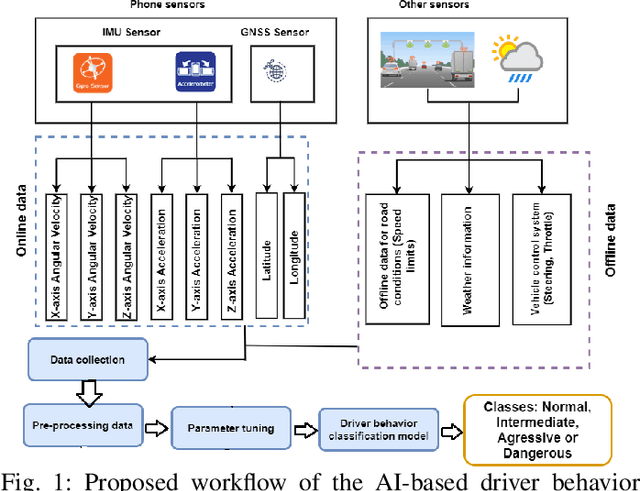
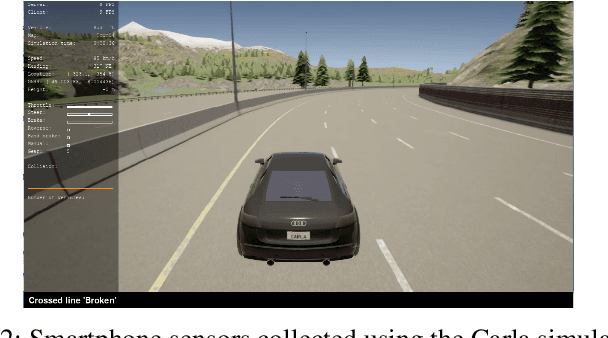
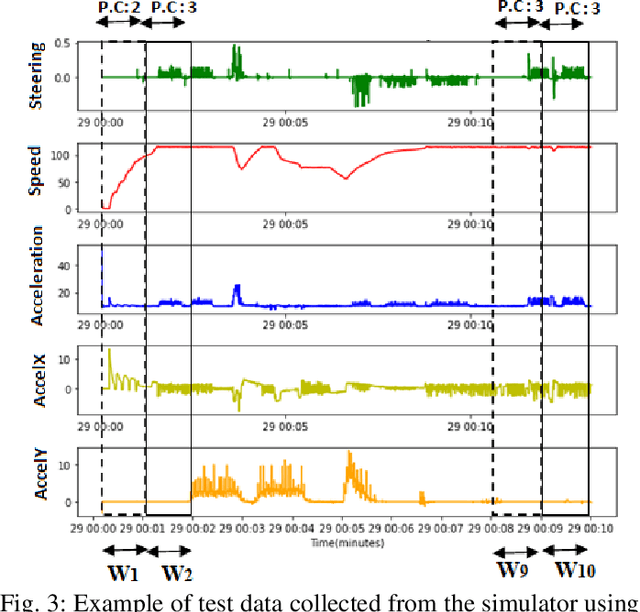
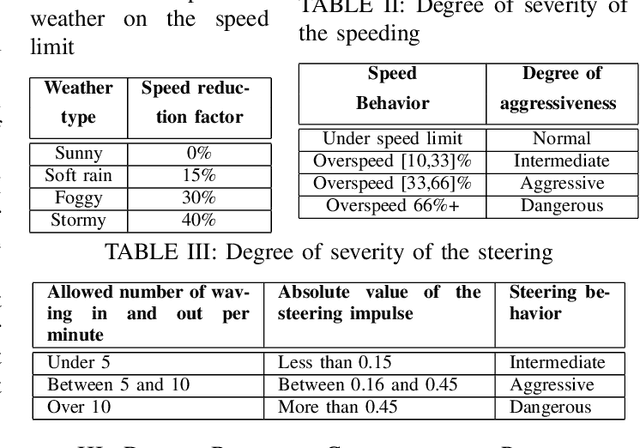
Abstract:Driver behavior profiling is one of the main issues in the insurance industries and fleet management, thus being able to classify the driver behavior with low-cost mobile applications remains in the spotlight of autonomous driving. However, using mobile sensors may face the challenge of security, privacy, and trust issues. To overcome those challenges, we propose to collect data sensors using Carla Simulator available in smartphones (Accelerometer, Gyroscope, GPS) in order to classify the driver behavior using speed, acceleration, direction, the 3-axis rotation angles (Yaw, Pitch, Roll) taking into account the speed limit of the current road and weather conditions to better identify the risky behavior. Secondly, after fusing inter-axial data from multiple sensors into a single file, we explore different machine learning algorithms for time series classification to evaluate which algorithm results in the highest performance.
Low Complexity Recruitment for Collaborative Mobile Crowdsourcing Using Graph Neural Networks
Jun 01, 2021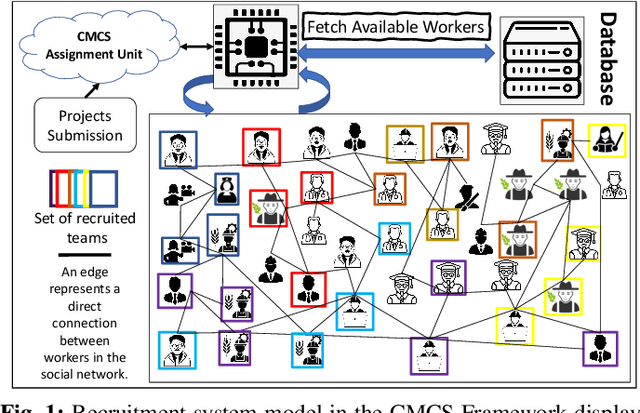
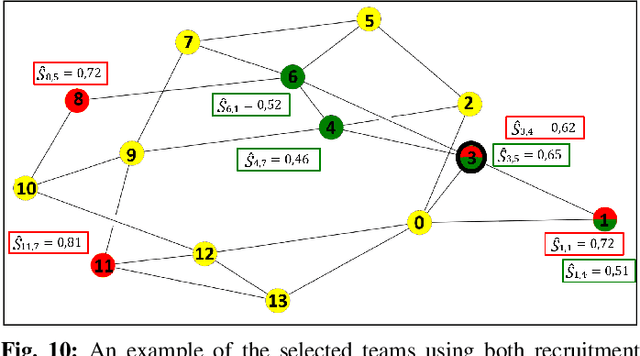
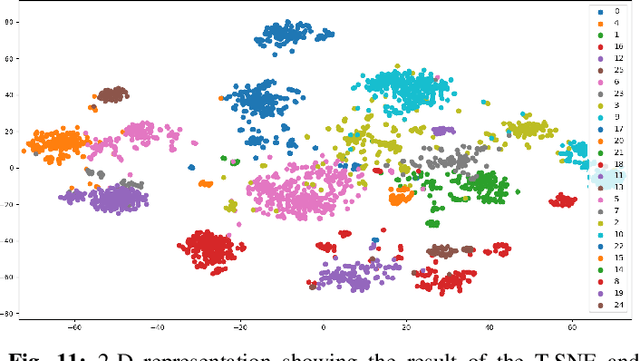
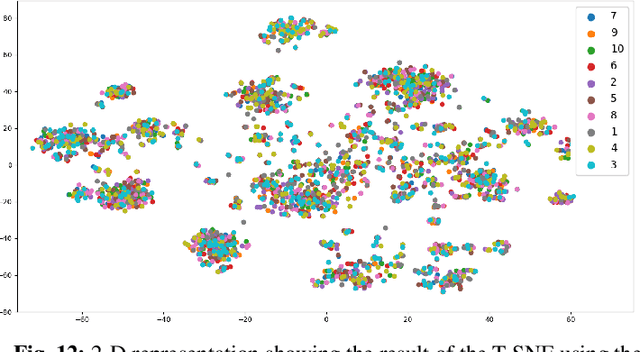
Abstract:Collaborative Mobile crowdsourcing (CMCS) allows entities, e.g., local authorities or individuals, to hire a team of workers from the crowd of connected people, to execute complex tasks. In this paper, we investigate two different CMCS recruitment strategies allowing task requesters to form teams of socially connected and skilled workers: i) a platform-based strategy where the platform exploits its own knowledge about the workers to form a team and ii) a leader-based strategy where the platform designates a group leader that recruits its own suitable team given its own knowledge about its Social Network (SN) neighbors. We first formulate the recruitment as an Integer Linear Program (ILP) that optimally forms teams according to four fuzzy-logic-based criteria: level of expertise, social relationship strength, recruitment cost, and recruiter's confidence level. To cope with NP-hardness, we design a novel low-complexity CMCS recruitment approach relying on Graph Neural Networks (GNNs), specifically graph embedding and clustering techniques, to shrink the workers' search space and afterwards, exploiting a meta-heuristic genetic algorithm to select appropriate workers. Simulation results applied on a real-world dataset illustrate the performance of both proposed CMCS recruitment approaches. It is shown that our proposed low-complexity GNN-based recruitment algorithm achieves close performances to those of the baseline ILP with significant computational time saving and ability to operate on large-scale mobile crowdsourcing platforms. It is also shown that compared to the leader-based strategy, the platform-based strategy recruits a more skilled team but with lower SN relationships and higher cost.
A Generative Graph Method to Solve the Travelling Salesman Problem
Jul 09, 2020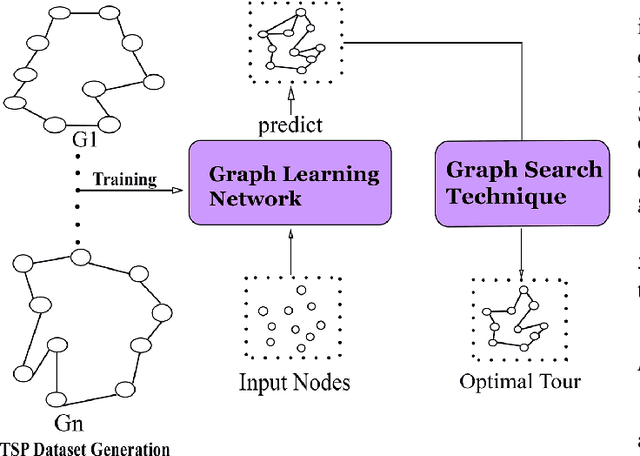
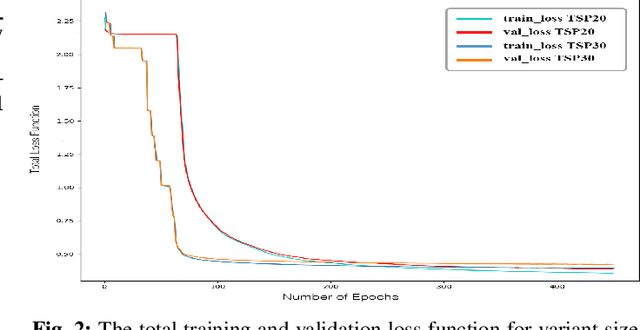


Abstract:The Travelling Salesman Problem (TSP) is a challenging graph task in combinatorial optimization that requires reasoning about both local node neighborhoods and global graph structure. In this paper, we propose to use the novel Graph Learning Network (GLN), a generative approach, to approximately solve the TSP. GLN model learns directly the pattern of TSP instances as training dataset, encodes the graph properties, and merge the different node embeddings to output node-to-node an optimal tour directly or via graph search technique that validates the final tour. The preliminary results of the proposed novel approach proves its applicability to this challenging problem providing a low optimally gap with significant computation saving compared to the optimal solution.
A Photo-Based Mobile Crowdsourcing Framework for Event Reporting
May 03, 2020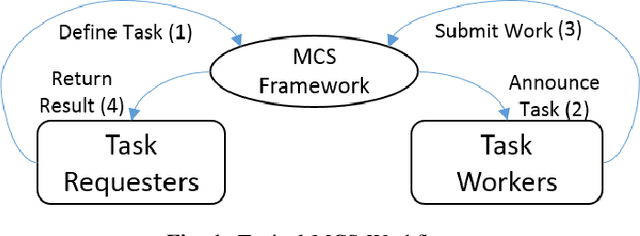
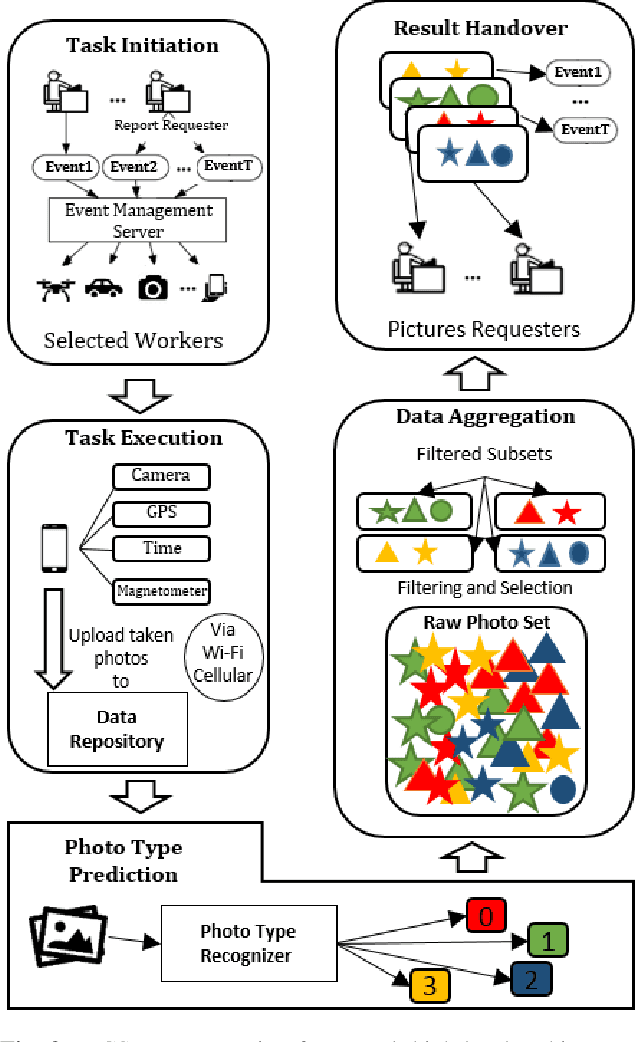
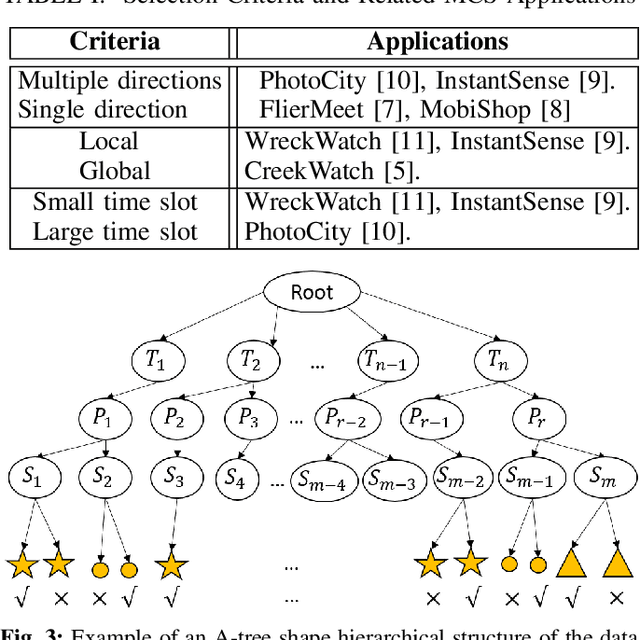
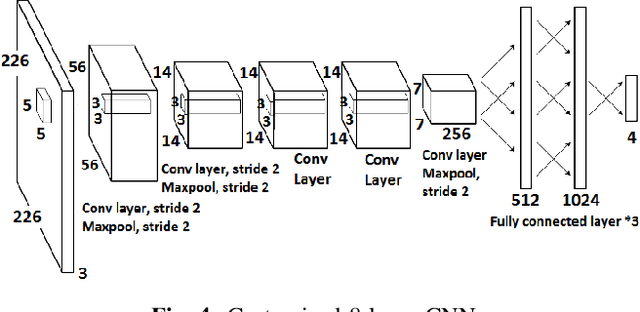
Abstract:Mobile Crowdsourcing (MCS) photo-based is an arising field of interest and a trending topic in the domain of ubiquitous computing. It has recently drawn substantial attention of the smart cities and urban computing communities. In fact, the built-in cameras of mobile devices are becoming the most common way for visual logging techniques in our daily lives. MCS photo-based frameworks collect photos in a distributed way in which a large number of contributors upload photos whenever and wherever it is suitable. This inevitably leads to evolving picture streams which possibly contain misleading and redundant information that affects the task result. In order to overcome these issues, we develop, in this paper, a solution for selecting highly relevant data from an evolving picture stream and ensuring correct submission. The proposed photo-based MCS framework for event reporting incorporates (i) a deep learning model to eliminate false submissions and ensure photos credibility and (ii) an A-Tree shape data structure model for clustering streaming pictures to reduce information redundancy and provide maximum event coverage. Simulation results indicate that the implemented framework can effectively reduce false submissions and select a subset with high utility coverage with low redundancy ratio from the streaming data.
* Published in 2019 IEEE 62nd International Midwest Symposium on Circuits and Systems (MWSCAS)
Word Embedding-based Text Processing for Comprehensive Summarization and Distinct Information Extraction
Apr 21, 2020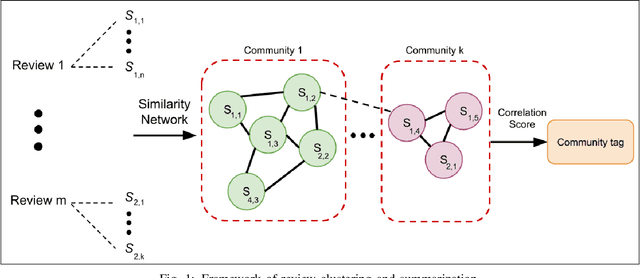
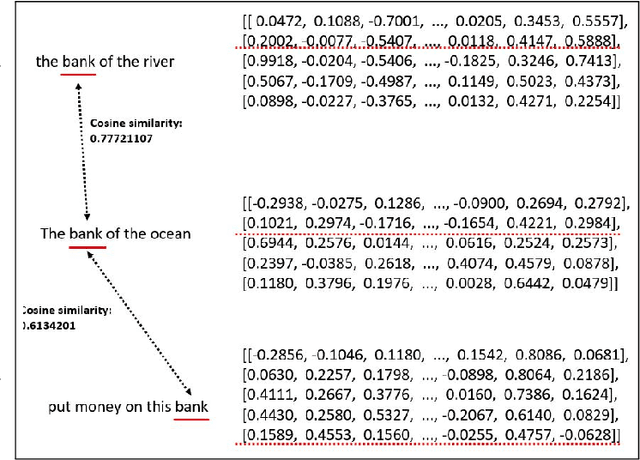

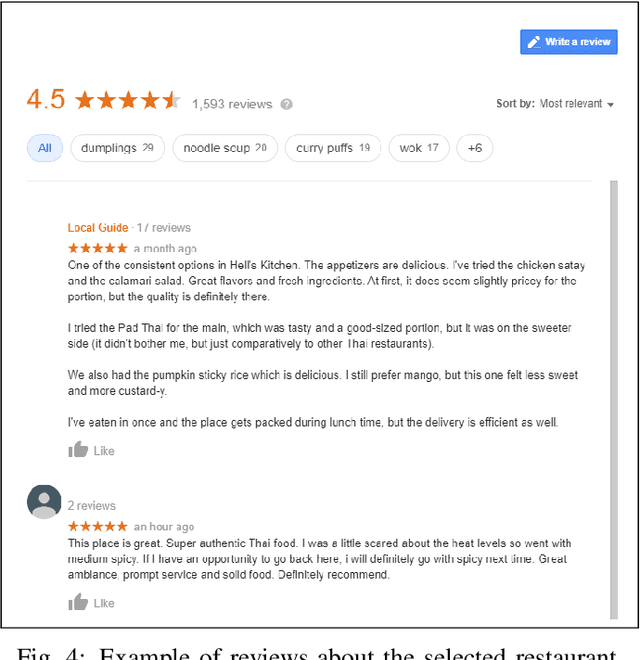
Abstract:In this paper, we propose two automated text processing frameworks specifically designed to analyze online reviews. The objective of the first framework is to summarize the reviews dataset by extracting essential sentence. This is performed by converting sentences into numerical vectors and clustering them using a community detection algorithm based on their similarity levels. Afterwards, a correlation score is measured for each sentence to determine its importance level in each cluster and assign it as a tag for that community. The second framework is based on a question-answering neural network model trained to extract answers to multiple different questions. The collected answers are effectively clustered to find multiple distinct answers to a single question that might be asked by a customer. The proposed frameworks are shown to be more comprehensive than existing reviews processing solutions.
Leveraging Personal Navigation Assistant Systems Using Automated Social Media Traffic Reporting
Apr 21, 2020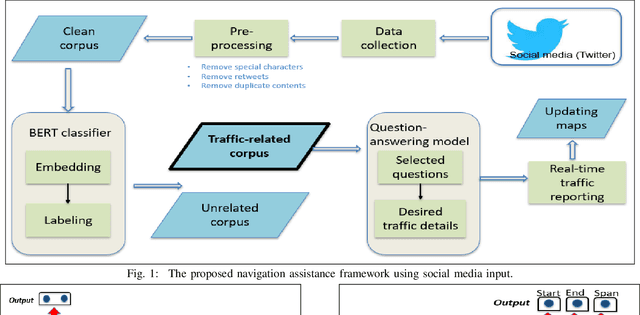
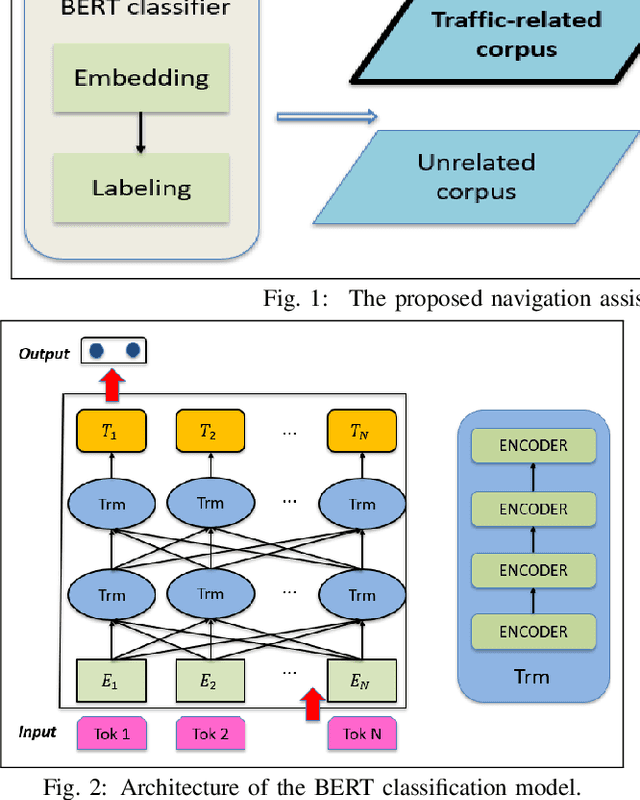
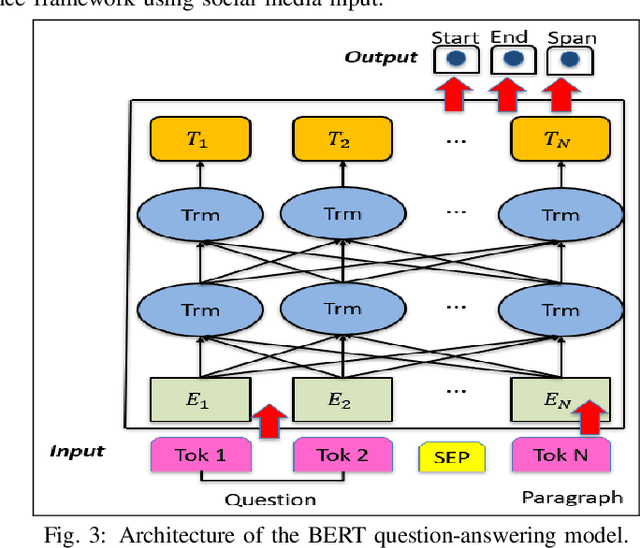
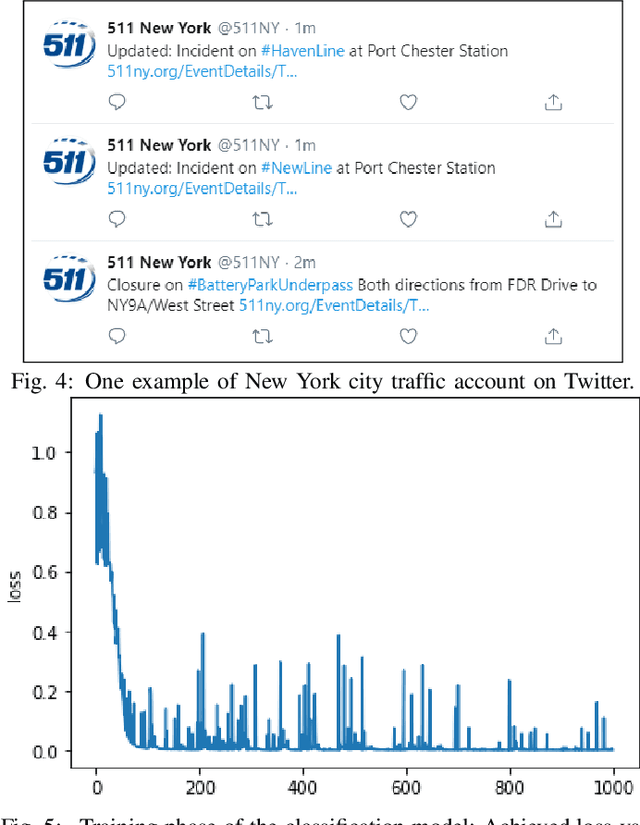
Abstract:Modern urbanization is demanding smarter technologies to improve a variety of applications in intelligent transportation systems to relieve the increasing amount of vehicular traffic congestion and incidents. Existing incident detection techniques are limited to the use of sensors in the transportation network and hang on human-inputs. Despite of its data abundance, social media is not well-exploited in such context. In this paper, we develop an automated traffic alert system based on Natural Language Processing (NLP) that filters this flood of information and extract important traffic-related bullets. To this end, we employ the fine-tuning Bidirectional Encoder Representations from Transformers (BERT) language embedding model to filter the related traffic information from social media. Then, we apply a question-answering model to extract necessary information characterizing the report event such as its exact location, occurrence time, and nature of the events. We demonstrate the adopted NLP approaches outperform other existing approach and, after effectively training them, we focus on real-world situation and show how the developed approach can, in real-time, extract traffic-related information and automatically convert them into alerts for navigation assistance applications such as navigation apps.
Scalable and Secure Architecture for Distributed IoT Systems
Apr 20, 2020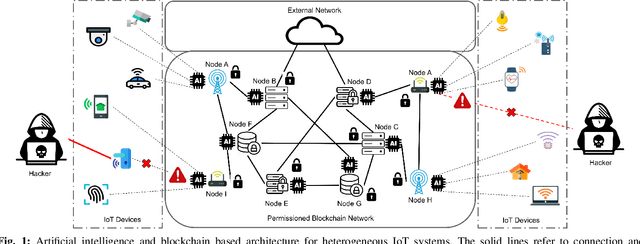
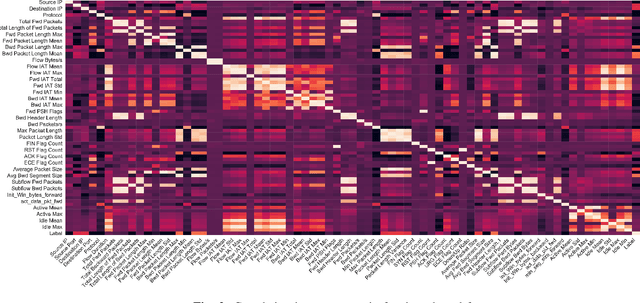
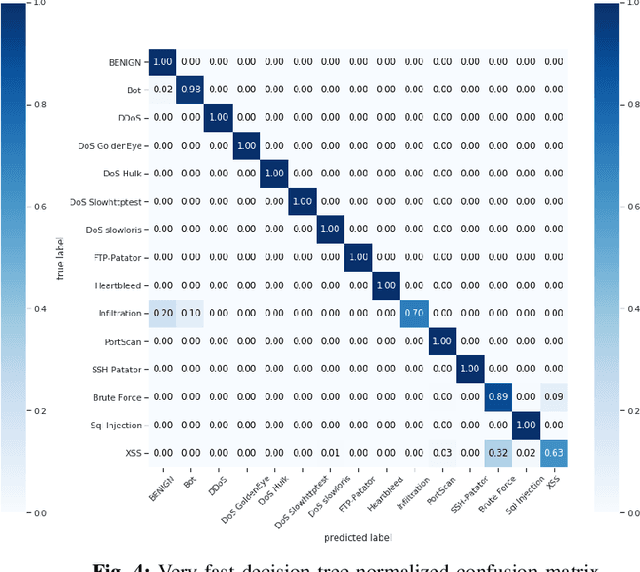
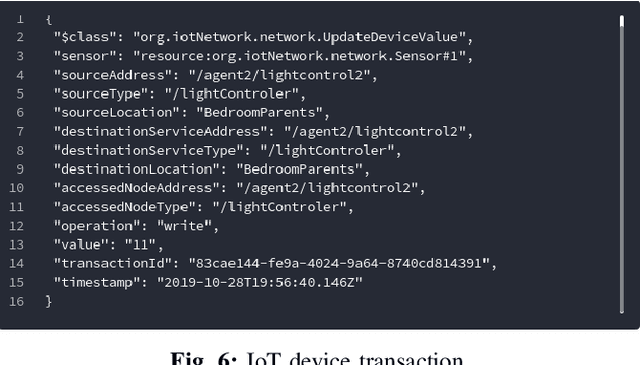
Abstract:Internet-of-things (IoT) is perpetually revolutionizing our daily life and rapidly transforming physical objects into an ubiquitous connected ecosystem. Due to their massive deployment and moderate security levels, those devices face a lot of security, management, and control challenges. Their classical centralized architecture is still cloaking vulnerabilities and anomalies that can be exploited by hackers for spying, eavesdropping, and taking control of the network. In this paper, we propose to improve the IoT architecture with additional security features using Artificial Intelligence (AI) and blockchain technology. We propose a novel architecture based on permissioned blockchain technology in order to build a scalable and decentralized end-to-end secure IoT system. Furthermore, we enhance the IoT system security with an AI-component at the gateway level to detect and classify suspected activities, malware, and cyber-attacks using machine learning techniques. Simulations and practical implementation show that the proposed architecture delivers high performance against cyber-attacks.
 Add to Chrome
Add to Chrome Add to Firefox
Add to Firefox Add to Edge
Add to Edge